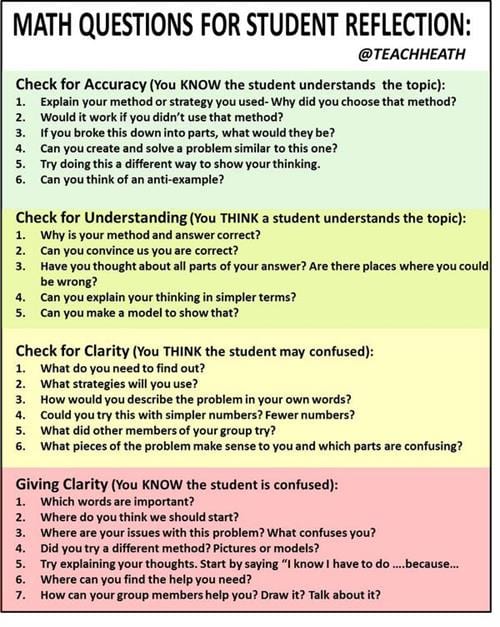
See more ideas about higher level thinking higher order thinking teaching. Any question becomes a recall question if the answer has already been explicitly provided to the student in class or in the text.

Help students understand what higher-order thinking is.
Higher level thinking questions for elementary. Dec 4 2015 - Questions to use to promote higher level thinking. See more ideas about higher level thinking higher order thinking teaching. Define High Order Thinking SIDE 2.
High Order Thinking in a classroom is like __________ must include an illustration Ex. Waves in an Ocean because TYPES OF QUESTIONS. HIGH ORDER THINKING QUESTIONS.
This set of higher order thinking questions includes 4 cards for each of the 6 levels. Youll also receive interactive notebook pockets if youd like to include these in with your creative novel projects. Use these as task cards or as class discussion questions.
These cards are included in ALL of my. Below are 36 questions to help you as you are teaching main idea to your 3rd grade 4th grade and 5th grade students. The questions are organized based on the Revised Blooms Taxonomy - there are 6 questions for each category.
You can download a free printable of these questions at. Questions should be designed to promote higher level thinking encourage students discussion build better understanding of a concept and challenge students thinking. Asking questions like this is hard to do without preparation and planning.
Below find links to questions that you can use for different reading skills to promote higher level thinking. Most of the questions are based off of Blooms Taxonomy or the revised Blooms Taxonomy. Higher Order Thinking Skills Question Templates Recall Note.
Any question becomes a recall question if the answer has already been explicitly provided to the student in class or in the text. 75 Great Critical Thinking Questions. Use these during your next book discussion.
Karen Nelson on April 12 2021. Were always looking for ways to get our kids to think more deeply. Critical thinking skills are really important.
They allow your students to think clearly and rationally and understand the logical connection between ideas. The students work together to accomplish four main tasks. 1 preview skim over the material determine what they know and what they want to learn 2 identify clicks and clunks clicks we get it.
Clunks we dont understand this concept idea or word 3 get the gist main idea and 4 wrap up summarize important ideas and generate questions think of questions the teacher might. There is a formula using distance rate and time. You need d r t and one basic operation.
Think it out with your partner using this word problem about driving at a rate of 25 miles per hour. See if you can write a formula that works and seems reasonable. Then explain to the class.
Use these levels of questions to challenge students in all grade levels with various types of questions as defined by Blooms Taxonomy. They will be doing higher-level thinking and you will have a more interesting classroom. This Blooms Taxonomy resource includes an in-depth discussion of the different levels of questioning with suggested examples.
Ask a Closed Question. These questions generally elicit yes or no answers. They can bring students to different temporal areas or elaborations of details but the extent of this is structured by the question.
Do you think Goldilocks knew how the bears would feel about her action. Was it a good idea to lie down in one of the bears beds. Low enquiry vs high enquiry Low enquiry questions tend to reinforce correct answers.
High enquiry questions stimulate a much broader range of responses. And tend to stimulate high levels of thinking. Evidence supports the using of both types of questions as low enquiry will help to sharpen students ability to recall and focus on details while.
Help Determine What Higher-Order Thinking Is. Help students understand what higher-order thinking is. Explain to them what it is and why they need it.
Help them understand their own strengths and challenges. You can do this by showing them how they can ask themselves good questions. That leads us to the next strategy.
Higher level thinking takes thinking to higher levels than restating the facts. Higher level thinking requires that we do something with the facts. We must understand them infer from them connect them to other facts and concepts categorize them manipulate them put them together in new or novel ways and apply them as we seek new solutions to new problems.
The more you move toward higher-level questioning techniques the easier it gets. Remind yourself to ask open-ended questions ask questions that stimulate why do you think type answers. The goal is to get them thinking.
What color hat was he wearing is a low-level thinking question Why do you think he wore that color is better.